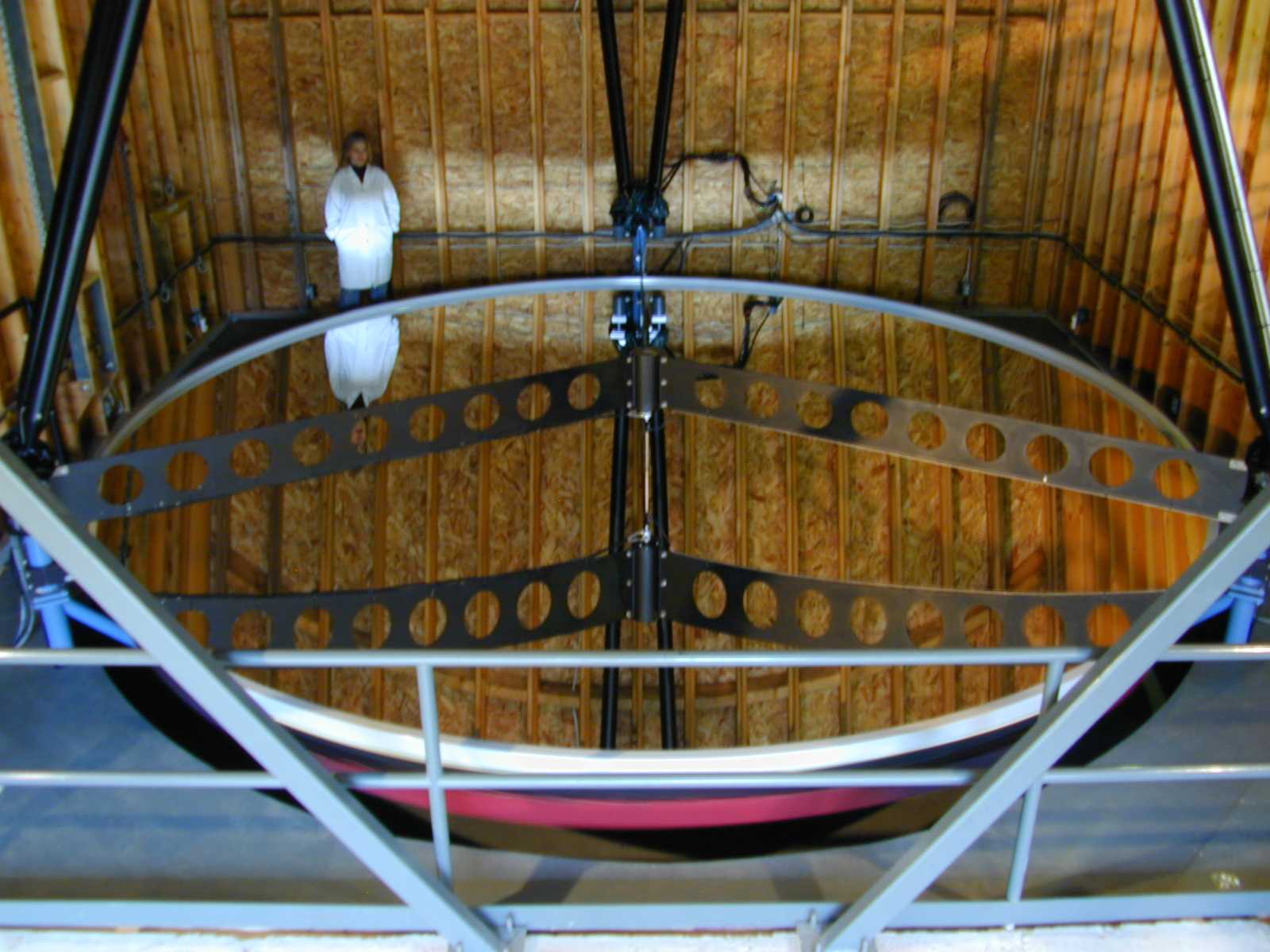

What is a Liquid Lens?
By Alix Paultre
A liquid lens uses one or more fluids to create an infinitely-variable lens without any moving parts by controlling the meniscus (the surface of the liquid.) There are two primary types, transmissive and reflective. These are not to be confused with liquid-formed lenses that are created by placing a drop of plastic or epoxy on a surface, which is then allowed to harden into a lens shape.
Reflective liquid lenses are actually variable mirrors, and are used in reflector telescopes in place of traditional glass mirrors. When a container of fluid (in this case, mercury) is rotated, centripetal force creates a smooth reflective concavity that is ideally suited for telescope applications. Normally, such a smooth curved surface has to be meticulously ground and polished into glass in an extremely expensive and tricky process (remember the Hubble Space Telescope mirror fiasco?) A reflective liquid lens would never suffer from that problem, as a simple change in rotation speed would change the curve of the meniscus to the proper shape.
One example is at the University of British Columbia. The 236-inch (6-meter) Liquid Mirror Telescope (LMT) is the world's 13th largest telescope. Its reflective surface is made of a flat container of mercury spinning at about 5 RPM. The telescope costs only about $1 million, a significant reduction from the roughly $100 million cost of what a conventional telescope with a regular solid glass mirror of the same size would require.
Transmissive liquid lenses use two immiscible fluids, each with a different refractive index, to create variable-focus lenses of high optical quality as small as 10 Ķm (microns). There are two ways to manipulate the two fluids, electrically and mechanically, but both methods take advantage of the surface tension of the liquid. The electric method uses a novel property called electrowetting to modify the surface tension, while the mechanical method takes advantage of surface tension to physically change the shape of the lens.
Extremely shock and vibration resistant, a liquid lens is capable of seamless transition from convex (convergent) to concave (divergent) lens shapes with switching times measured in milliseconds. In addition, the boundary between the two fluids forms an extremely smooth and regular surface, making liquid lenses of a quality suitable for endoscopic medical imaging and other space-constrained high-resolution applications like microcameras and fiber-optic telecommmunications systems.
The FluidFocus lens from Philips uses an electrically-conducting aqueous solution and a nonconducting oil contained in a short tube with transparent end caps. The interior of the tube and one of the caps is coated with a hydrophobic material, which causes the aqueous solution to form a hemispherical lens-shaped mass at the opposite end of the tube. The shape of the lens is adjusted by electrowetting, applying a dc voltage across the coating to decrease its water repellency. This adjusts the liquid's surface tension, changing the radius of curvature in the meniscus and thereby the focal length of the lens. Only 0.1 microjoules (ĶJ) are needed for each change of focus.
The liquid lens from Varioptic also uses electrowetting. A water drop is deposited on a substrate made of metal and covered by a thin insulating layer. The voltage applied to the substrate modifies the contact angle of the liquid drop. The liquid lens also uses two isodensity liquids, an insulator and a conductor. The variation of voltage leads to a change of curvature of the liquid-liquid interface, which in turn leads to a change of the focal length of the lens.
Singapore-based A*STARís Institute of Materials Research and Engineering has developed a liquid lens that uses mechanical action to control the meniscus by stretching and pressing a drop of liquid. According to the developers, the Fluidlens saves on battery consumption, is cheaper to manufacture, and occupies less space in the device than lenses using electrowetting.
Whatever the core technology, liquid lenses are coming, and they'll give small cameras such as those in PDAs and Cell Phones a true optical focusing and zoom capability.
The aforementioned liquid-formed lenses are a cool technology as well, and used mostly on image sensors. Tiny drops of epoxy are placed on each pixel, which then form individual lenses to increase light-capturing ability. They are also used on novelty items to create a magnifying effect.

The Large Zenith Telescope at the UBC Malcolm Knapp Research Forest in Maple Ridge, British Columbia measures six meters in diameter. The adjustable mirror is created by rotating a pan of mercury.

The Philips FluidFocus lens consists of two immiscible (non-mixing) fluids of different refractive index (optical properties), one an electrically conducting aqueous solution and the other an electrically non-conducting oil, contained in a short tube with transparent end caps. Researchers show the miniature variable lens and the camera that contains the lens. Photo: Philips

The liquid lens from Varioptic uses two isodensity liquids, one is an insulator while the other is a conductor. The variation of voltage leads to a change of curvature of the liquid-liquid interface, which in turn leads to a change of the focal length of the lens.

The Fluidlens from Singapore-based A*STARís Institute of Materials Research and Engineering (IMRE) does not need electricity, which means it saves on battery consumption, is cheaper to manufacture and occupies less space in the device.